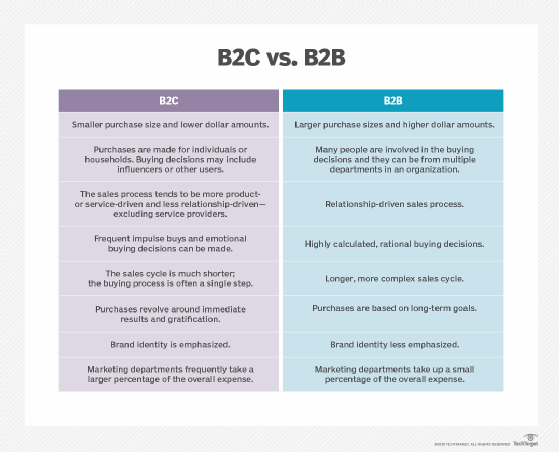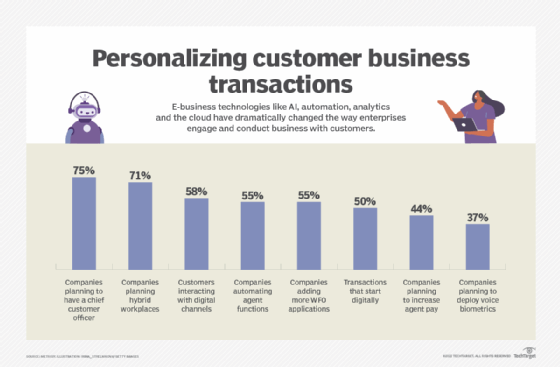E Work Continuously With Our Partners
E-business (electronic business) is the conduct of online business processes on the web, internet, extranet or a combination thereof. These customer-, internal- and management-focused business processes include buying and selling goods and services, servicing customers, processing payments, managing production and supply chains, collaborating with business partners, sharing information, running automated employee services and recruiting employees.
E-business is similar to e-commerce but encompasses much more than online purchasing transactions. Functions and services range from the development of intranets and extranets to the provision of e-services over the internet by application service providers. Enterprises conduct e-business to buy parts and supplies from other companies, collaborate on sales promotions and conduct joint research.
Corporations are continuously rethinking and reshaping their business models influenced by advanced technologies, hybrid workforces, heightened customer expectations and, specifically, the internet's availability, reach and ever-changing capabilities. The growth of e-business in recent decades has given rise to new business requirements. Consumers expect organizations to provide self-service options to conduct transactions, personalized experiences, and speedy, secure interactions. New regulatory laws and best practices for keeping electronic data secure have been established. Companies have adopted stringent security protocols and tools, including encryption, digital certificates and multi-factor authentication, to protect against hackers, fraud and theft.
Cybersecurity has become ingrained in e-business with deployments of endpoint device security and advance detection and response capabilities. Security is built into browsers, and digital certificates are now available for individuals and companies from various vendors providing cybersecurity tools and technologies. Even though securing business transactions on the web remains a pressing issue for consumers and enterprises, e-business continues to grow at a healthy pace.
E-business model origins and evolution
IBM was one of the first companies to use the term e-business in October 1997, when it launched a thematic campaign to address the confusion many consumers had about internet-based businesses. The company spent approximately $500 million on an advertising and marketing campaign to show the value of the e-business model and to demonstrate that IBM had the "talent, the services and the products to help customers capture the benefits of this new way of doing business," according to the company's website. By 2000, IBM's e-business revenue had grown to more than $88 billion from $64 billion in 1994, and net income had nearly tripled.
Different types of e-business models
- Business-to-consumer (B2C) model. Sellers offer products and services directly to consumers online, and the buyer purchases them via the internet.
- Business-to-business (B2B) model. Companies use the internet to conduct transactions with one another. Unlike B2C transactions, B2B transactions usually involve multiple online transactions at each step of the supply chain.
- Consumer-to-business (C2B) model. Consumers create their own value and demand for goods and services. Examples include reverse online auctions and airline ticket websites such as Priceline and Expedia.
- Consumer-to-consumer (C2C) model. Consumers are buyers and sellers via third-party-facilitated online marketplaces such as eBay. These models generate revenue through personal ad fees, charges for memberships and subscriptions, and transaction fees.

Examples of e-business
E-business encompasses older companies that digitally transformed from legacy processes to data-centric operations and newer digitally oriented companies. The latter are organizations that advisory firm Gartner has defined as starting after 1995 with "operating models and capabilities [that] are based on exploiting internet-era information and digital technologies as a core competency." Since then examples of e-business organizations of different shapes and sizes have flooded the digital landscape.
- Amazon, the world's largest online retailer and marketplace, has used its e-business model to disrupt and expand into numerous well-established industries, including publishing and supermarkets.
- Uber and Lyft, both of which built businesses that match drivers with people needing rides, disrupted the taxi and livery services industries. And in 2014, Uber went one step further and expanded its e-business with the launch of a food ordering and delivery platform, Uber Eats.
- Travel sites like Expedia, Travelocity and TripAdvisor enable consumers to research, plan and book all or pieces of their trips based on personalized criteria, such as price, consumer ratings and location.
- Schindler Group, a multinational elevator and escalator company founded in 1874, is a legacy company that incorporated e-business by using IoT and other technologies to add internet and mobility services to its product offerings.
Advantages of e-business
E-business has drastically changed how enterprises, government agencies, nonprofit organizations and other institutions operate, allowing them to increase productivity, lower costs, move more quickly toward digital transformation and upgrade processes.
Electronic invoicing, automated billing and digital payment systems lower the amount of time workers devote to these tasks, many of which were handled manually just a few decades ago. That kind of time savings allows businesses to decrease department head count or shift workers onto higher-value tasks. Digital systems also streamline workflows, reducing the time between invoicing and payment and improving cash flow for the business.
Electronic communication systems, such as email, video conferencing and online collaboration platforms increase productivity by decreasing delays between inquiries and responses -- whether the communication is among employees, employees and external business partners, or employees and customers. Decision-making is faster, resulting in more agile companies that are responsive to stakeholder needs and market demands. Electronic communication has also eliminated, in some cases, employee business travel and supported more open, collaborative cultures so any employee can contribute ideas.
Digital systems that power e-business can also extend an organization's reach beyond its brick-and-mortar walls. Cloud-based business applications enable remote and hybrid workers to perform their jobs in the office, from their home and other locations. Similarly, cloud-based apps and the internet allow business transactions 24/7 so even solo practitioners and small businesses can conduct business globally.
Advanced technologies like big data, AI, machine learning, the cloud, automation and IoT have improved the ease, speed and effectiveness of numerous e-business tasks. These tasks include archiving information, deriving data insights, recording financial transactions and personalizing interactions with customers.
E-commerce software and services have delivered new capabilities to organizations like email marketing and created new avenues to sell their goods and services, such as online stores. It has enabled the creation of entirely new business models, such as eBay's capacity for B2C and C2C sales, social networking sites like Facebook and Twitter, and Shopify, which offers the infrastructure and e-commerce platform for customers to create online stores and sell their own goods.

Types of e-business
Most organizations have at least some e-business capabilities to support their core competencies and ancillary functions, but the amount of e-business conducted within an enterprise varies.
Some organizations have limited e-business capabilities -- for example, a small business that processes payments using a mobile payment service but uses no other digital services. On the other end of the spectrum are those companies whose business model is fully empowered by electronic and digital services.
Businesses emerging from the fallout of the COVID-19 pandemic are increasingly using digital services to support a host of functions and capabilities. Those organizations could be classified as e-commerce entities or fully powered e-businesses but tend to be categorized in traditional terms.
Business and digital authorities still frequently classify e-business as B2B, B2C, C2B and C2C. Some offer additional classes of e-business, such as business-to-government and business-to-employee.
Challenges of e-business
The types of challenges presented by electronic business vary from one organization to another, depending on a host of factors, including whether the company was born digital, whether digital services power the company's core value proposition, whether digital services are used for e-business in only parts of the company's operations and whether the company houses legacy technology. Despite the various levels of digital transformation, e-business challenges have a common thread that include the following:
- securing e-business services against increasingly sophisticated cyberthreats;
- scaling services fast enough to meet demand without jeopardizing performance;
- evolving technologies fast enough to keep pace with changing market dynamics;
- finding and training skilled workers to keep pace with advanced technologies; and
- keeping pace with e-business capabilities that, by their electronic nature, are always on.
Additionally, many companies struggle to integrate their siloed data and functions with e-business services to converge and work seamlessly together.
Security and risks
E-business tactics offer advantages like reaching a wider customer base and faster transactions, but they also come with associated risks.
E-business creates huge data security risks -- for example, because customers are often required to provide sensitive information, such as contact information and credit card numbers, during e-business transactions. This information is enticing to hackers and particularly vulnerable to data breaches, so e-business website owners are responsible for incorporating methods like data encryption to ensure secure transactions. Failure to ensure data integrity and incorporate appropriate data security measures can lead to costly fines and the loss of customer brand loyalty.
E-business relies on swift, secure online transactions, so even something as simple as a bad web hosting service creates a financial risk for companies. Crashed servers and insufficient bandwidth lead to persistent website downtime and customer dissatisfaction, making it imperative for organizations to invest in well-known and reliable hosting providers, which, in turn, can drive up the costs associated with running a successful e-business.
Marketing comes with its own set of risks as well. All types of businesses rely on effective marketing to drive growth and sales, but online marketing techniques are very different from traditional offline methods. Without an effective marketing campaign specifically tailored to promote e-business, businesses face a huge financial risk by investing in marketing resources that don't drive consumer traffic to the transaction websites.
E-businesses are also vulnerable to systemic risk that influences the entire online market segment. The dot-com crash of 2000 to 2001, for example, began after several e-business startups went public and were purchased by other e-businesses. Many of these e-businesses had little cash flow, valued growth more than financial stability and went out of business due an unsustainable economic bubble that eventually burst.
E-business vs. e-commerce
E-commerce and e-business are similar but not synonymous. E-commerce narrowly refers to buying and selling products online, whereas e-business defines a wider range of business processes, including supply chain management, electronic order processing and customer relationship management, designed to help companies operate more effectively and efficiently. E-commerce therefore should be considered a subset of e-business.
E-commerce describes any part of the business processes associated with online ordering and purchasing. An e-commerce transaction, for example, would be a customer ordering online and picking up the product at the brick-and-mortar store. By contrast, e-business processes can be handled in-house through a company's internal network or outsourced to providers that specialize in specific parts of the transaction.
This was last updated in May 2022
Continue Reading About e-business (electronic business)
- 3 ways to maximize business process automation benefits
- Learn 4 key types of enterprise automation technologies
- European retailers see embedded finance as a revenue rebuilder
- SMEs step up e-commerce ventures under shadow of Covid
- 8 free IT strategic planning templates and examples for CIOs
Dig Deeper on Digital transformation
-

m-commerce (mobile commerce)
-
![]()
Pandemic turns e-commerce doubters into believers
-

How do you know when you've outgrown your e-commerce platform?
-

e-commerce
Source: https://www.techtarget.com/searchcio/definition/e-business





0 Response to "E Work Continuously With Our Partners"
Postar um comentário